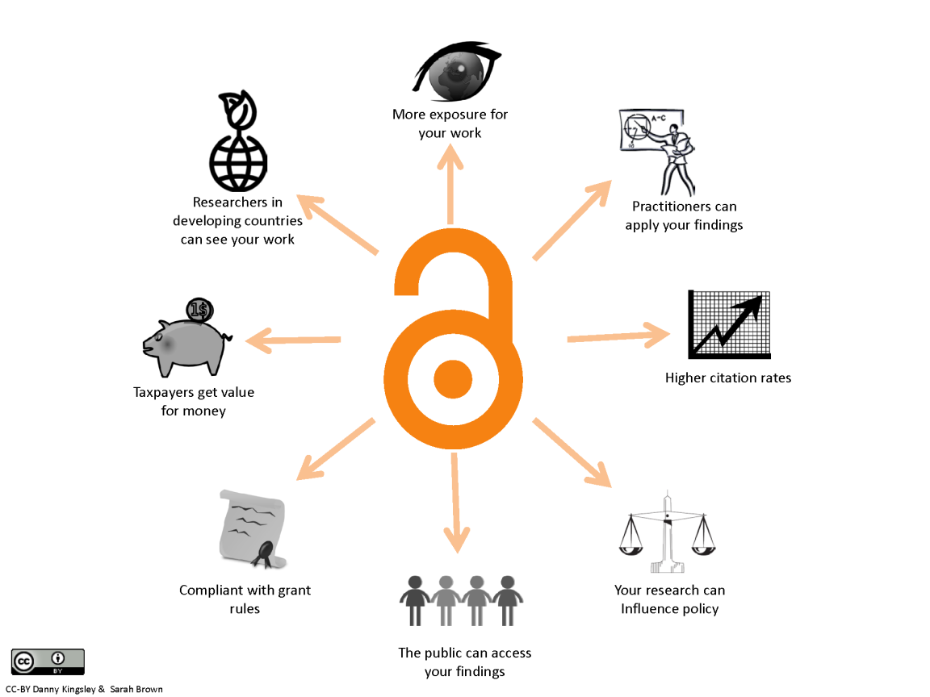
The UHI research webpages also provide a wealth of information on open access publishing.
The broad concept of Open Access (OA) publishing is to make the outputs of publicly funded research freely available, in a digital format, to anyone without restriction. This suite of guidance materials aims to provide information on the legal requirements plus processes and policies stipulated by the University of the Highlands and Islands, to ensure that its researchers are compliant.
Image courtesy of the J. Murrey Atkins Library at UNC Charlotte
This video created by Nick Shockey and Jonathan Eisen, from PHDComics, gives a summary of many of the issues and drivers behind open access.
Content taken from An introduction to open access | Jisc and reproduced under Creative Commons Licence (CC BY-NC-ND).
Making your work open access can help make sure:

Researchers can benefit greatly through Open Access publishing. Short video (2:56 minutes) courtesy of UCL open access team where researchers discuss the advantages of OA.
There are two complementary mechanisms for achieving open access to research.
The first mechanism is for authors to publish in open-access journals that do not receive income through reader subscriptions.
The second is for authors to deposit their refereed journal article in an open electronic archive.
These two mechanisms are often called the ‘gold’ and ‘green’ routes to open access:
Image from Thoughts by Kevin Irikefe - Free for all: Open Access
Diamond OA is a new development being driven by EU funders and the agency behind Plan S – as such we should expect this new development will produce a requirement, or at least an opportunity, for UHI researchers to deal more often in another form of OA in years to come. Diamond OA refers to a scholarly publication model in which journals and platforms do not charge fees to either authors or readers:- “Diamond Open Access journals represent community-driven, academic-led and -owned publishing initiatives. Serving a fine-grained variety of generally small-scale, multilingual, and multicultural scholarly communities, these journals and platforms embody the concept of bibliodiversity.” according to the 2022 action plan for Diamond access. For UHI researchers, this would mean APC-free publication but, as ever, the platform must be chosen carefully to ensure the intended audience for the research results will be able to find the work.
Diamond
These journals are usually funded by a society or funder. There is no APC charge to publish in them or subscription charge to read them. Content is peer reviewed.
Fully Gold Open Access
Authors are required to pay an APC to have content published in these journals. They are free to read and content is peer reviewed.
Hybrid
Journals contain a mixture of traditional subscription-based publishing and open access. Some individual articles are available open access, as a result of an article processing charge (APC) having been paid, and the rest require a subscription to be paid in order to be accessed. Content is peer reviewed.
Non OA
These journals have no APC charge to publish in them but there is a pay wall so people have to pay a subscription to read them. Content is peer reviewed.